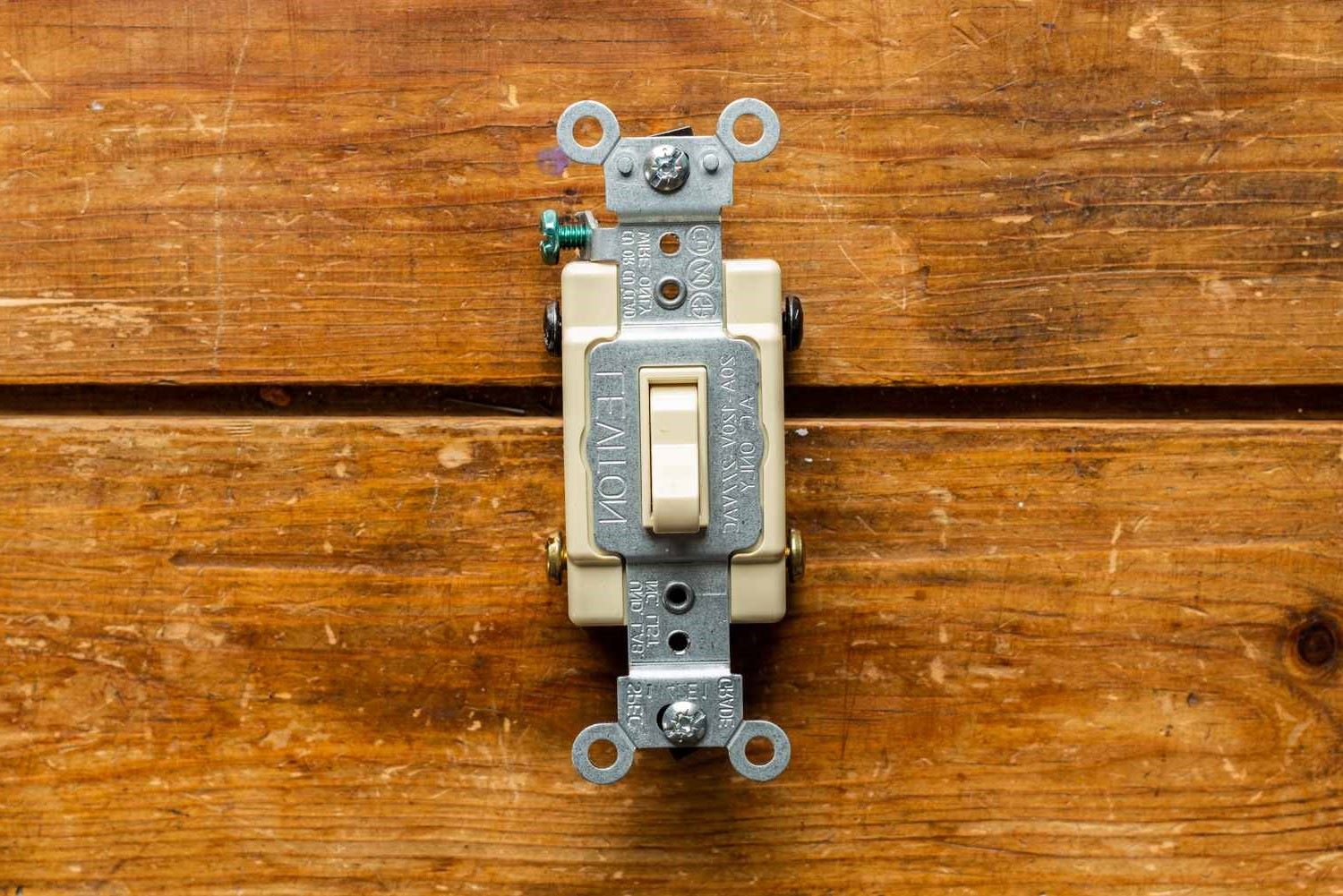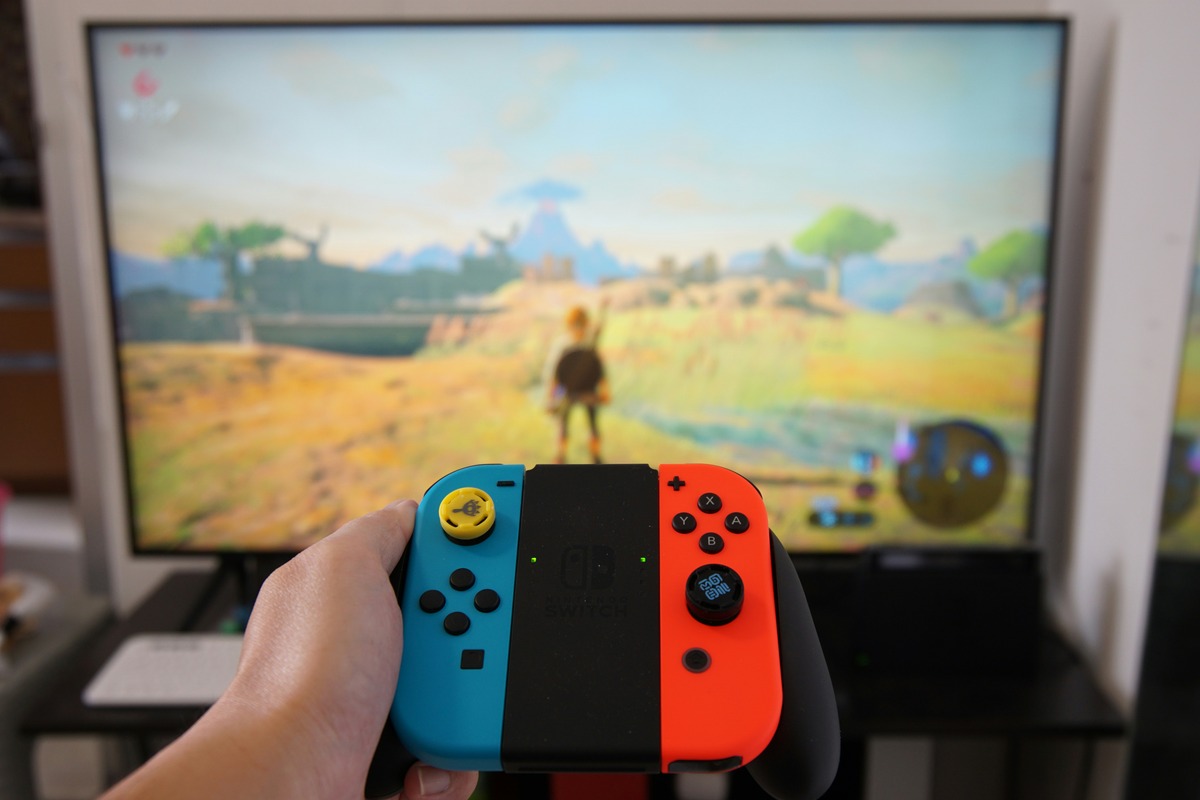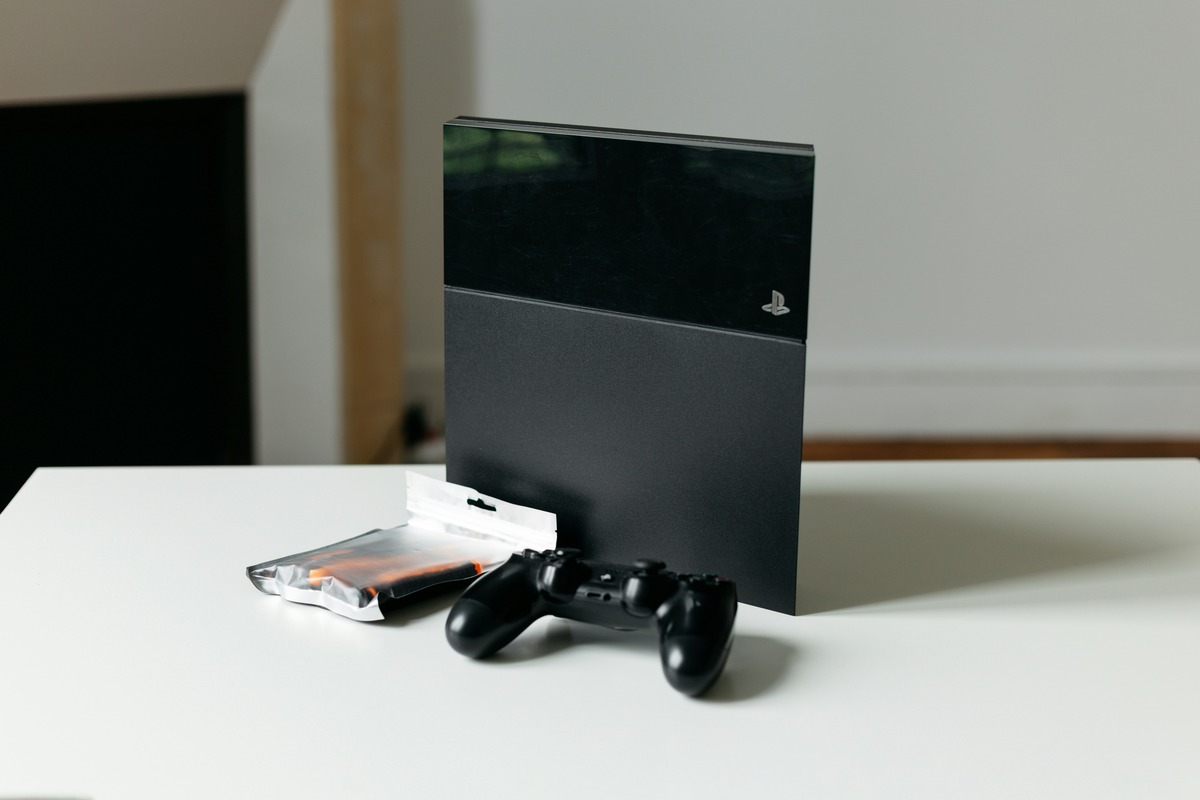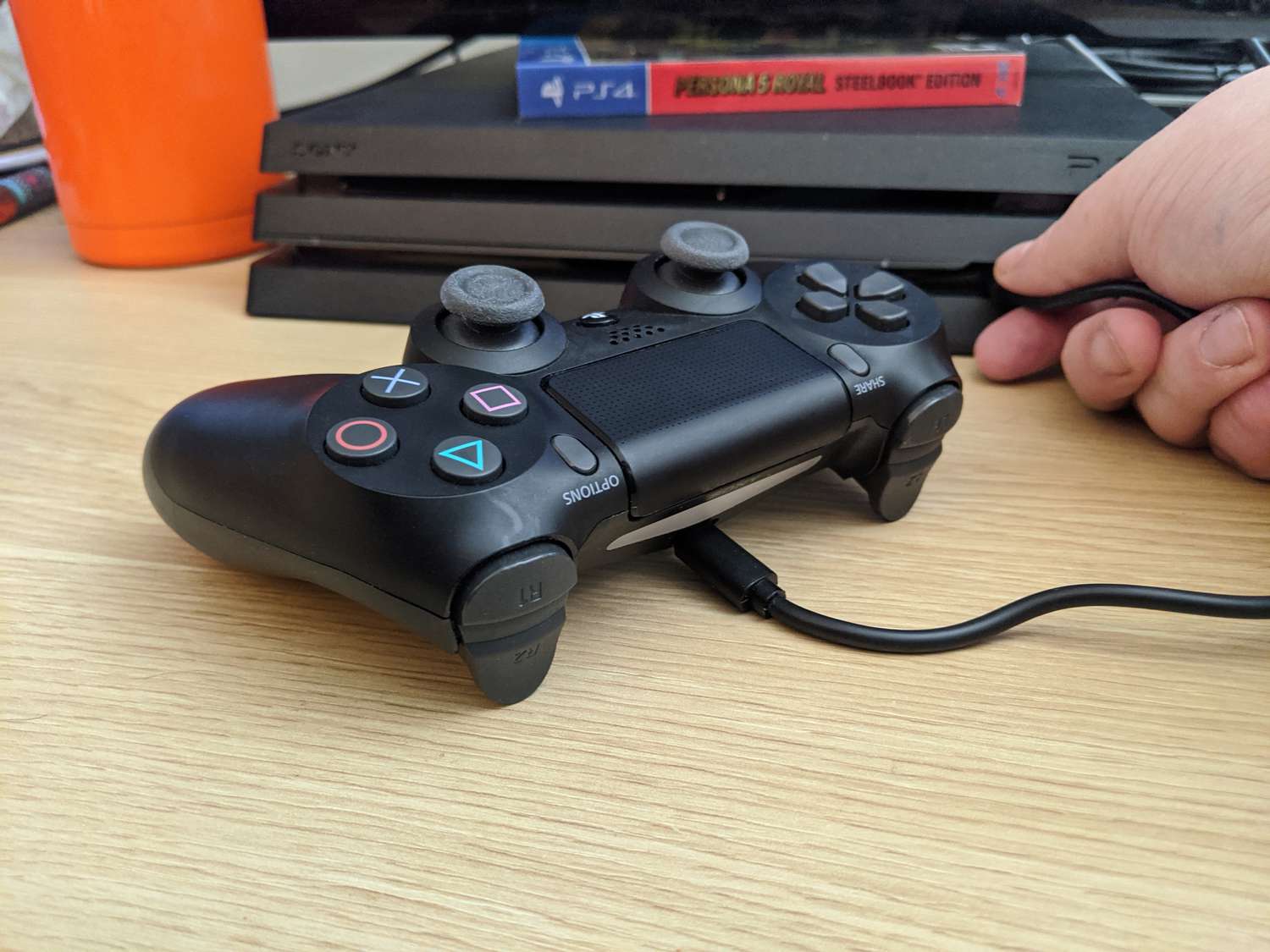Home>Home and Garden>How To Wire A 4-Way Switch


Home and Garden
How To Wire A 4-Way Switch
Published: February 29, 2024
Learn how to wire a 4-way switch in your home and garden with our step-by-step guide. Master the process and ensure safety with our expert tips.
(Many of the links in this article redirect to a specific reviewed product. Your purchase of these products through affiliate links helps to generate commission for Noodls.com, at no extra cost. Learn more)
Table of Contents
Introduction
Wiring a 4-way switch can seem like a daunting task, especially for those who are not familiar with electrical work. However, with the right guidance and a clear understanding of the process, it can be a manageable and rewarding project. A 4-way switch is commonly used in homes to control lighting from three or more locations, providing convenience and flexibility in how the lights are operated.
In this comprehensive guide, we will walk you through the step-by-step process of wiring a 4-way switch. Whether you are a seasoned DIY enthusiast or a novice looking to expand your home improvement skills, this article will equip you with the knowledge and confidence to tackle this electrical project.
Understanding the intricacies of a 4-way switch and the necessary tools and materials is crucial before diving into the wiring process. By following the detailed instructions provided, you will be able to safely and effectively wire a 4-way switch, ultimately enhancing the functionality and convenience of your home's lighting system.
So, let's roll up our sleeves and embark on this enlightening journey to demystify the process of wiring a 4-way switch. With a clear understanding of each step and a methodical approach, you'll soon be on your way to successfully completing this electrical project.
Read more: How To Wire A Light Switch
Understanding the 4-Way Switch
A 4-way switch is a unique type of electrical switch commonly used in residential settings to control lighting from multiple locations. Unlike traditional single-pole switches, which are used for basic on/off control from a single location, the 4-way switch allows for the control of a single light fixture from three or more different locations. This versatility makes it an ideal choice for areas such as large rooms, hallways, or staircases where multiple switch locations are necessary for convenient access to lighting control.
The 4-way switch is an integral component of a multi-way switching system, which also includes two 3-way switches. Together, these switches create a network that enables the user to turn the lights on or off from any of the switch locations, providing flexibility and convenience. Understanding the wiring configuration and the role of each switch in this system is essential for successfully installing and operating a 4-way switch.
In a 4-way switch setup, the electrical current can travel through multiple paths, allowing for the toggling of the light fixture from different switch locations. This is achieved through the internal connections within the 4-way switch, which facilitate the redirection of the electrical flow based on the position of the other switches in the circuit. It's important to note that the 4-way switch does not have "on" or "off" positions like a single-pole switch; instead, it serves as a crossover point in the circuit, directing the flow of electricity according to the input from the 3-way switches.
To visualize the function of a 4-way switch, consider a scenario where a light fixture is controlled by switches at the top and bottom of a staircase, as well as a hallway switch. The 4-way switch, typically installed in the hallway, acts as the intermediary control point, allowing the user to turn the lights on or off from any of the three switch locations. This seamless coordination is made possible by the intricate internal wiring of the 4-way switch, which intelligently manages the electrical connections within the multi-way switching system.
By grasping the fundamental role of the 4-way switch within a multi-way switching setup, you will gain a deeper understanding of its significance in providing convenient and flexible lighting control across multiple locations in your home. With this knowledge as a foundation, you will be well-prepared to proceed to the practical aspects of wiring a 4-way switch, equipped with a clear understanding of its purpose and functionality.
Tools and Materials Needed
Before embarking on the process of wiring a 4-way switch, it is essential to gather the necessary tools and materials to ensure a smooth and efficient installation. Having the right equipment at your disposal will not only streamline the process but also contribute to the overall safety and success of the project. Here's a comprehensive list of the tools and materials you will need:
Tools:
- Screwdriver Set: A set of flathead and Phillips screwdrivers will be indispensable for removing existing switches and securing the wiring connections.
- Wire Stripper/Cutter: This tool is essential for accurately stripping the insulation from the electrical wires and cutting them to the required length.
- Voltage Tester: Prior to working on the electrical circuit, a voltage tester is crucial for verifying that the power has been safely turned off to the switch location.
- Needle-Nose Pliers: These pliers will aid in bending and shaping the wires for proper connection to the switch terminals.
- Wire Nut Connectors: These connectors are used to secure the electrical connections, ensuring a reliable and safe installation.
- Flashlight: A reliable flashlight will assist in illuminating the work area, especially if the switch location is in a dimly lit space.
Materials:
- 4-Way Switch: Acquire a high-quality 4-way switch from a reputable manufacturer to ensure durability and reliable performance.
- 3-Way Switches: If not already in place, you will need two 3-way switches to complete the multi-way switching system.
- Electrical Wire: Depending on the existing wiring configuration, you may need additional electrical wire to establish the connections between the switches and the light fixture.
- Wire Nuts: These are essential for securely connecting the electrical wires together, providing a safe and insulated junction.
- Electrical Tape: Use electrical tape to insulate any exposed wire connections and provide an added layer of protection.
- Mounting Screws: If the switches are being installed in a new location or if the existing screws are worn, having a set of mounting screws on hand will be beneficial.
By ensuring that you have the aforementioned tools and materials readily available, you will be well-prepared to proceed with the wiring process, minimizing interruptions and ensuring a seamless installation of the 4-way switch. With these essentials at your disposal, you can approach the project with confidence, knowing that you have the necessary resources to complete the task effectively and safely.
Read more: How To Solder Wires
Step 1: Turn Off Power
Before commencing any work on the electrical circuit, the first and most critical step is to ensure the power supply to the switch location is completely turned off. This is a fundamental safety measure that must be strictly adhered to in order to prevent the risk of electrical shock or injury. Here's a detailed guide on how to safely turn off the power:
-
Locate the Circuit Breaker Panel: Identify the circuit breaker panel in your home where the electrical circuits are controlled. This panel is typically located in a utility room, basement, or garage.
-
Switch Off the Appropriate Circuit: Once you have located the circuit breaker panel, carefully identify the circuit that supplies power to the switch location where the 4-way switch will be installed. Most circuit breaker panels are labeled to indicate which circuit corresponds to specific areas of the home. If the panel is not labeled, you may need to use a voltage tester to identify the correct circuit.
-
Turn Off the Circuit Breaker: Using caution and wearing appropriate personal protective equipment, switch off the circuit breaker that controls the power to the designated switch location. It is advisable to physically verify that the power has been successfully turned off by attempting to operate the existing switches and ensuring that the lights do not turn on.
-
Test for Voltage: After turning off the circuit breaker, use a voltage tester to confirm that there is no electrical voltage present at the switch location. This additional step provides an extra layer of assurance that the power has been effectively disconnected, minimizing the risk of accidental contact with live wires.
-
Secure the Circuit Breaker: To prevent the circuit from being inadvertently turned back on while you are working, consider using a lockout/tagout device to secure the circuit breaker. This precautionary measure adds an extra level of safety by preventing unauthorized access to the circuit during the installation process.
By diligently following these steps to turn off the power, you will create a safe working environment for the subsequent tasks involved in wiring the 4-way switch. Prioritizing safety at every stage of the project is essential for the well-being of both the installer and the integrity of the electrical system. Once the power has been effectively turned off and verified, you can proceed with confidence to the next phase of the installation process, knowing that you have taken the necessary precautions to ensure a secure work environment.
Step 2: Remove Existing Switches
With the power safely turned off, the next step in the process of wiring a 4-way switch is to remove the existing switches that are being replaced. This involves carefully disconnecting the electrical wires from the current switches and preparing the switch junction boxes for the installation of the new 4-way switch and accompanying 3-way switches. Here's a detailed guide on how to effectively remove the existing switches:
-
Access the Switch Junction Box: Begin by accessing the switch junction box where the existing switches are installed. Depending on the location and accessibility of the switches, you may need to use a screwdriver to remove the cover plate and expose the interior of the junction box.
-
Verify the Power is Off: Prior to handling the switches, it is crucial to double-check that the power supply to the junction box is indeed turned off. Use a voltage tester to confirm the absence of electrical voltage, providing an additional layer of safety before proceeding with the removal of the switches.
-
Remove the Switch Screws: Using an appropriate screwdriver, carefully remove the screws that secure the existing switches to the junction box. Keep the screws in a safe place, as they may be reused when installing the new switches.
-
Pull Out the Switches: Gently pull the existing switches out of the junction box, being mindful of the connected wires. Take note of the arrangement of the wires and the terminals to aid in the subsequent installation of the new switches.
-
Disconnect the Wires: With the switches exposed, carefully disconnect the electrical wires from the terminals on the switches. It is important to keep track of which wires are connected to each terminal, as this information will be crucial when wiring the new switches.
-
Inspect the Wiring: Take this opportunity to inspect the condition of the electrical wires and the junction box. Look for any signs of damage, wear, or loose connections that may need to be addressed before installing the new switches.
-
Prepare the Junction Box: Once the existing switches and wires have been removed, ensure that the junction box is clean and free of any debris or obstructions. This will provide a clear and organized space for installing the new switches and making the necessary electrical connections.
By meticulously following these steps to remove the existing switches, you will effectively prepare the switch junction box for the installation of the new 4-way switch and 3-way switches. This careful and methodical approach sets the stage for the subsequent steps in the wiring process, ensuring that the transition to the new switches is seamless and well-executed.
Step 3: Identify the Common Wire
Identifying the common wire is a crucial step in the process of wiring a 4-way switch. The common wire, also known as the "traveler wire," plays a pivotal role in establishing the electrical connections between the 4-way switch and the accompanying 3-way switches within the multi-way switching system. Properly identifying and distinguishing the common wire from the other electrical conductors is essential for ensuring the correct configuration and functionality of the switches.
To effectively identify the common wire, it is important to understand its distinct characteristics and its role in the multi-way switching setup. In a typical 4-way switch configuration, there are three traveler wires and one common wire. The common wire serves as the point of connection for the electrical circuit and facilitates the transfer of power between the switches, ultimately controlling the operation of the light fixture.
Here's a detailed guide on how to identify the common wire:
-
Examine the Wiring Configuration: Begin by carefully examining the existing wiring configuration in the switch junction box. Identify the bundle of electrical wires and take note of their colors and positions within the junction box. The common wire is typically a different color from the traveler wires, often black or a color distinct from the standard traveler wire colors, such as red or blue.
-
Consult the Wiring Diagram: If available, refer to the wiring diagram provided with the 4-way switch or consult a reliable electrical wiring resource to understand the standard color coding and terminal identification for the common wire. This reference will serve as a valuable guide in differentiating the common wire from the traveler wires based on industry-standard conventions.
-
Use a Voltage Tester: Employ a voltage tester to identify the common wire among the electrical conductors. With the power supply to the switch location turned off, carefully test each wire to determine which one carries the electrical voltage. The wire that consistently shows voltage when tested against the other wires is likely the common wire.
-
Label the Common Wire: Once the common wire has been identified, it is advisable to label it using electrical tape or another suitable marking method. This labeling will help distinguish the common wire from the traveler wires during the subsequent steps of the installation process, ensuring accurate and secure connections to the 4-way switch.
By diligently following these steps to identify the common wire, you will gain the clarity and confidence needed to proceed with the wiring process. A thorough understanding of the common wire and its distinct characteristics is essential for establishing the correct connections and ensuring the proper functionality of the 4-way switch within the multi-way switching system. With the common wire accurately identified and distinguished, you are well-equipped to move forward with the subsequent stages of installing the 4-way switch and completing the multi-way switching setup.
Step 4: Connect the Wires to the 4-Way Switch
With the common wire identified and the junction box prepared, the next critical step is to connect the electrical wires to the 4-way switch. This process involves establishing the necessary electrical connections between the switch terminals and the corresponding wires, ensuring a secure and reliable configuration that enables the proper operation of the multi-way switching system. Here's a detailed guide on how to effectively connect the wires to the 4-way switch:
-
Understand the Terminal Layout: Begin by familiarizing yourself with the terminal layout of the 4-way switch. Most 4-way switches feature four terminal screws, typically labeled as "A," "B," "C," and "D." It is essential to understand the function of each terminal and how they correspond to the traveler wires and the common wire within the electrical circuit.
-
Position the Switch: Carefully position the 4-way switch in the junction box, ensuring that it is oriented correctly and aligned for the subsequent wiring process. The switch should fit securely within the box, with the terminal screws easily accessible for making the necessary connections.
-
Connect the Traveler Wires: Identify the three traveler wires within the electrical bundle and connect each one to a separate terminal screw on the 4-way switch. It is crucial to maintain consistency in the wiring configuration, ensuring that each traveler wire is securely fastened to the corresponding terminal, such as "A," "B," and "C."
-
Secure the Common Wire: With the common wire clearly labeled and distinguished, connect it to the remaining terminal screw on the 4-way switch. The common wire plays a pivotal role in establishing the electrical pathway between the 4-way switch and the accompanying 3-way switches, enabling the seamless control of the light fixture from multiple locations.
-
Double-Check the Connections: Once all the wires have been securely connected to the 4-way switch, carefully double-check each terminal screw to ensure that the connections are tight and secure. It is essential to verify that there are no loose wires or exposed conductors, as this could compromise the integrity of the electrical connections.
-
Insulate the Connections: After confirming the secure attachment of the wires to the 4-way switch, use electrical tape to insulate the terminal screws and the wire connections. This additional layer of insulation provides protection against accidental contact with live electrical components and contributes to the overall safety of the installation.
By meticulously following these steps to connect the wires to the 4-way switch, you will establish a robust and reliable electrical configuration that forms the backbone of the multi-way switching system. Each connection plays a crucial role in facilitating the seamless operation of the 4-way switch and its coordination with the accompanying 3-way switches, ultimately enabling convenient and flexible control of the lighting from multiple locations. With the wires securely connected and the switch properly configured, you are now prepared to proceed to the next phase of the installation process, bringing you one step closer to the successful completion of the 4-way switch wiring project.
Read more: How To Wire A Doorbell
Step 5: Install the New Switches
With the 4-way switch wired and the electrical connections securely in place, the next pivotal step in the installation process is to install the new 3-way switches that complement the multi-way switching system. The 3-way switches, working in conjunction with the 4-way switch, form a cohesive network that enables the convenient control of the light fixture from multiple locations. Here's a detailed guide on how to effectively install the new switches:
-
Position the 3-Way Switches: Begin by positioning the new 3-way switches in their respective switch junction boxes. Ensure that the switches fit securely within the boxes and that the terminal screws are easily accessible for the subsequent wiring process.
-
Connect the Traveler Wires: Identify the traveler wires within the electrical bundle and connect them to the appropriate terminal screws on each 3-way switch. It is crucial to maintain consistency in the wiring configuration, ensuring that each traveler wire is securely fastened to the corresponding terminal, typically labeled as "Common," "Traveler," and "Traveler."
-
Secure the Ground Wire: Locate the ground wire within the electrical bundle and connect it to the designated ground terminal on each 3-way switch. The ground wire provides an essential safety feature, grounding the switch and providing protection against electrical faults.
-
Double-Check the Connections: Once all the wires have been securely connected to the 3-way switches, carefully double-check each terminal screw to ensure that the connections are tight and secure. It is essential to verify that there are no loose wires or exposed conductors, as this could compromise the integrity of the electrical connections.
-
Insulate the Connections: After confirming the secure attachment of the wires to the 3-way switches, use electrical tape to insulate the terminal screws and the wire connections. This additional layer of insulation provides protection against accidental contact with live electrical components and contributes to the overall safety of the installation.
By meticulously following these steps to install the new 3-way switches, you will seamlessly integrate them into the multi-way switching system, creating a cohesive network that enables the convenient and flexible control of the lighting from multiple locations. Each connection and terminal screw plays a crucial role in facilitating the seamless operation of the 3-way switches, working in tandem with the 4-way switch to provide a comprehensive and versatile lighting control solution. With the new switches securely installed and the electrical connections finalized, you are now poised to proceed to the final phase of the installation process, bringing you one step closer to the successful completion of the 4-way switch wiring project.
Step 6: Turn On Power and Test the Switches
With the 4-way switch, 3-way switches, and accompanying electrical connections in place, the final step in the installation process is to turn on the power and test the functionality of the switches. This critical phase involves restoring the electrical supply to the switch location and verifying that the multi-way switching system operates as intended. Here's a detailed guide on how to effectively turn on the power and test the switches:
-
Restore the Power: Carefully return to the circuit breaker panel and switch on the circuit breaker that controls the power to the switch location. Exercise caution and be mindful of the potential presence of live electrical voltage as the power is restored.
-
Verify the Power Supply: Once the power has been turned back on, use a voltage tester to confirm the presence of electrical voltage at the switch location. This step ensures that the electrical circuit is energized and ready for testing.
-
Operate the Switches: With the power restored, proceed to test the functionality of the 4-way switch and the accompanying 3-way switches. Toggle the switches in various combinations to turn the light fixture on and off from different locations. Verify that the switches effectively control the lighting as intended, providing seamless operation from multiple switch locations.
-
Check for Consistency: Test the switches across all locations to ensure consistent and reliable operation. Pay close attention to any irregularities or unexpected behavior, such as flickering lights or non-responsive switches, which may indicate wiring issues or faulty connections.
-
Inspect the Light Fixture: As the switches are tested, observe the light fixture to ensure that it responds appropriately to the switch commands. Verify that the light turns on and off smoothly, without any signs of flickering or intermittent operation.
-
Fine-Tune the Connections: If any issues are identified during the testing phase, carefully inspect the electrical connections and terminal screws to identify and address any potential wiring issues. Secure any loose connections and retest the switches to ensure proper functionality.
-
Ensure Safety and Compliance: Throughout the testing process, prioritize safety and compliance with electrical codes and standards. Verify that the switches and connections are secure, insulated, and free from any hazards that could compromise the safety and performance of the multi-way switching system.
By diligently following these steps to turn on the power and test the switches, you will ensure that the 4-way switch and accompanying 3-way switches are fully operational and seamlessly integrated into the multi-way switching system. Thorough testing and verification of the switches' functionality provide confidence in the successful completion of the installation, culminating in a versatile and convenient lighting control solution for your home.
Conclusion
In conclusion, successfully wiring a 4-way switch, along with the accompanying 3-way switches, represents a significant achievement in enhancing the functionality and convenience of a home's lighting system. This comprehensive guide has provided a detailed and methodical approach to the installation process, equipping individuals with the knowledge and confidence to undertake this electrical project.
Understanding the intricacies of the 4-way switch and its role within a multi-way switching system is fundamental to the successful completion of the installation. By identifying the common wire, connecting the wires to the 4-way switch, and installing the new 3-way switches, a cohesive network is established, enabling the seamless control of the light fixture from multiple locations.
Prioritizing safety at every stage of the project, from turning off the power to testing the switches, is paramount. Adhering to safety protocols and electrical standards ensures the well-being of the installer and the integrity of the electrical system. Additionally, the use of appropriate tools and materials, as outlined in the guide, contributes to the efficiency and success of the installation.
The successful completion of the 4-way switch wiring project not only adds a layer of convenience to the home but also represents a valuable skill acquisition for DIY enthusiasts. The ability to navigate electrical installations with confidence and precision empowers individuals to take on a diverse range of home improvement projects, contributing to the overall functionality and personalization of their living spaces.
By following the detailed steps outlined in this guide, individuals can embark on the enlightening journey of demystifying the process of wiring a 4-way switch. With a clear understanding of each step and a methodical approach, they can confidently tackle this electrical project, ultimately enhancing the functionality and convenience of their home's lighting system.













